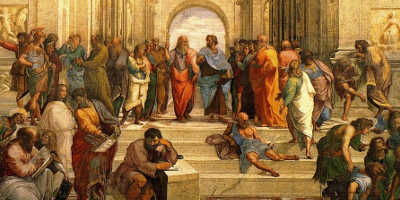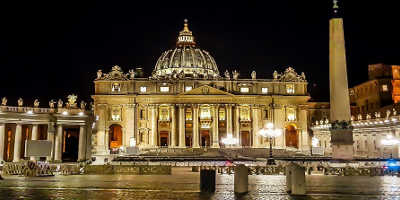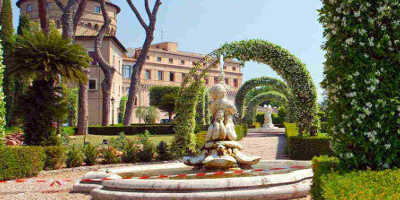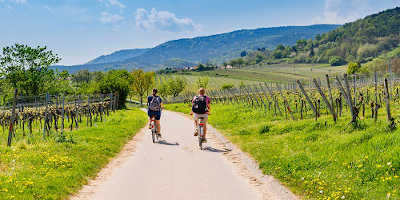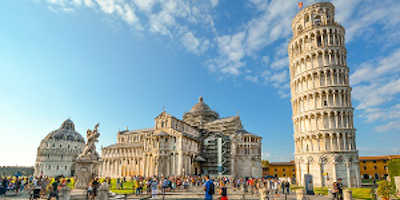Hierarchy of the Catholic Church
Pope, bishop, cardinal, priest. There are so many names thrown around when talking about the Catholic Church it is easy to get confused about who belongs where.
There are six main levels of the clergy and individuals work their way up the order, however very few will ever reach the top of the hierarchy. In fact, the majority of clergy members to not move past the second level.
-
-
Deacon
There are two types of Deacons within the Catholic Church, but we’re going to focus on transitional deacons. These men are also referred to as seminarians and are students of the Catholic Church. They are generally in their last phase of training for priesthood. They maintain this role for twelve months.
Deacons can practice in many similar ways to priests. They can baptise, witness marriages, and perform funerals.
-
Priest
After graduating from being a Deacon, individuals become priests. To become a priest, one must undertake the Rite of Ordination. This ordains them into the priesthood. During the ceremony, they promise to uphold the duties of priesthood and to obey his superiors.
Once a priest, individuals are able to perform the ceremony of the Eucharist, take confession and perform Anointing of the Sick. Priests are also able to perform Holy Matrimony.
There are two types of priests within the Catholic Church, religious and diocesan. Diocesan priests lead individual parishes. They serve the people within their own parish and are not required to take the same vowels as religious priests. Diocesan priests live on a monthly salary and have their meals and lodging provided for them by the parish. Additionally, they may wear whatever clothes they choose outside of service. This type of priest is more common in secular countries without a strong traditional Catholic population.
Religious priests, however, vow themselves to a religious order, such as the Jesuits. They wear particular religious garb and take additional vows of poverty and obedience. Priests are unable to hold personal possessions and they own very little other than their clothes. They typically live in a group house alongside other members of the order. Typically they are not provided with a salary and must follow the orders of their superior.
-
Bishop
Bishops are ministers who hold the full sacrament of holy orders. Catholics trace their origins to the time of the apostles, who were endowed with a spiritual gift by the Holy Spirit at Pentecost.
Bishops are required to be 35 years old, ordained at least five years prior and hold a doctorate in theology. They are believed to truly hold expertise in canon law and sacred scripture. They typically govern over local regions known as dioceses.
Becoming a bishop is an important moment in most clergy life, as all senior rankings hold the title bishop. Bishops reach their retirement age at 75 years old. At this time, they are to submit their resignation to the Pope who will then work with him to determine a suitable replacement.
Bishops are the third, and fullest level of the Sacrament of Holy Orders.
-
Archbishop
Archbishops are particularly important bishops. They oversee large areas of churches called archdiocese. The title comes from the Greek word meaning “chief”. Bishops report directly to them when in need of assistance or guidance. The archbishop is best thought of as a manager of bishops for a certain geographical region.
-
Cardinal
Cardinals are leading bishops and members of the College of Cardinals. Their biggest duty is participating in the Papal Conclave, that is, voting for the new Pope. Most have additional duties including missions within the Roman Curia, governmental body of the Holy See. To be eligible to attend these votes, however, Cardinals must be below the age of 80.
The current pope, Pope Francis, is known for his particularly diverse group of cardinals- if you can call a group of old, male, Catholic diverse. There are currently 128 serving cardinals. Of those, Pope Francis created 88 from 56 countries. 17 of these countries had never been represented in the College of Cardinals again.
In 2019 Pope Francis created several cardinals that are experts in the care of migrants and relations with Islam.
-
Pope
The highest honour a member of the clergy can receive is to be elected as the leader of the Catholic Church. The Pope is elected by cardinals under the age of 8- following the death or resignation of a Pope. There is no limit to how many years a Pope may hold his office.
The office of the Pope is referred to as the papacy. The Pope rules the Catholic Church in a very similar way to a king would a country, and he is the head of state for the Vatican City. The Roma Curia (you might remember them to be Cardinals) help the Pope to complete his duties.
Newly elected popes much choose a regnal name, many choose to honour the names of previous popes. Each pope chooses his name in reflection of a saint he feels a strong connection to. Catholics believe the pope is infallible when speaking in ex cathedra, and that God will not allow his followers to be misled by having him make a wrong statement when the criteria for ex cathedra are met.
As you can see, the Catholic clergy is quite the complicated institution. This article has just touched on the very basics of each of the Catholic cardinal levels. Additionally, you may have noticed we have only referred to males. This isn’t because we forgot women, it’s because the Catholic Church does not accept women into the clergy but that’s a story for another day.
Related article: The Flag of the Vatican City
-


